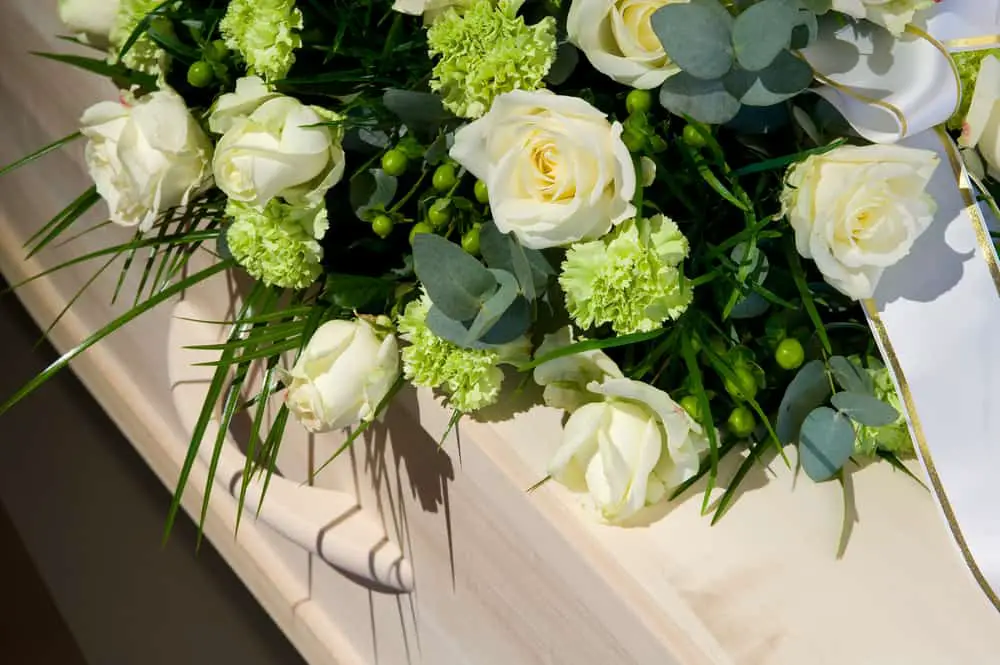
Death is a natural part of life, and while it is not something we typically like to think about and accept, understanding the process can help ease some fears and misconceptions. As you learn more about the dying process, it’s important to remember that everyone’s experience is unique and not all individuals will go through the same stages. Nevertheless, having a general knowledge about the end-of-life journey can provide comfort and empowerment.
In these upcoming sections, you’ll find information on some common physical, mental, and emotional changes a person may experience during their final days. Additionally, you will gain insight into how friends and family members can provide support and care throughout their loved one’s end-of-life journey. By exploring this subject, you will gain a better understanding of this inevitable transition, helping you approach it with a sense of calm and preparedness.
Understanding Dying
The Process of Dying
When you or a loved one is nearing the end of life, it’s essential to understand the natural process of dying. The journey towards death usually begins well before the final moments. It’s common to move through certain end-of-life stages that follow a general timeline. This process might include physical, emotional, and mental changes as the person becomes increasingly detached from the outside world.
- Physical Changes: You might experience a decline in energy levels, appetite, and mobility. Additionally, functions like breathing and circulation may become irregular.
- Emotional Changes: It’s normal to feel a wide range of emotions during this stage, including fear, sadness, and acceptance. Working through the Five Stages of Dying can help individuals in finding a sense of closure and peace.
- Mental Changes: As the brain function declines, there may be a decrease in mental activity, clarity, and focus.
Cultural Perspectives on Death
Different cultures around the world have unique beliefs and customs related to death and dying. Understanding these perspectives can provide valuable insights into how various societies honor and respect their deceased loved ones. Here are a few examples:
- Hinduism: In this faith, the transition from life to death is considered a natural process, and the soul is said to reincarnate into a new body after death. Cremation is the preferred burial method, and the ashes are often scattered in a holy river, such as the Ganges.
- Buddhism: Buddhists view death as a part of the cycle of life, death, and rebirth known as Samsara. They believe that an individual’s actions in their life will determine their future rebirth. A proper Buddhist funeral consists of rituals, meditation, and prayers designed to help the deceased’s consciousness transition to the next life.
- Christianity: For Christians, death represents the separation of the soul from the body. Believers anticipate resurrection and eternal life with God in Heaven. Funerals often include scripture readings, prayers, hymns, and a eulogy to celebrate the deceased’s life and faith.
Gaining a deeper understanding of the process of dying and cultural perspectives on death can help you better cope with the emotional challenges that come with losing a loved one or facing your own mortality. Remember to contact friends, family, or a counselor for support during these difficult times.

End-of-Life Care
As you’re learning about the dying process, it’s essential to understand end-of-life care. This type of care aims to provide support and medical assistance during the days, weeks, or even months leading to death1. Two crucial aspects of end-of-life care are Palliative Care and Hospice Services.
Palliative Care
Palliative care is a specialized form of medical care designed to relieve the symptoms and stress of a serious illness2. The primary goal is to improve the quality of life for both the patient and their family. Some of the services integrated into palliative care include:
- Pain and symptom management
- Emotional and spiritual support
- Coordination of care with other healthcare providers
This type of care can be offered at any stage of a severe illness and provided alongside curative treatments3.
Hospice Services
Hospice services come into play when a patient is nearing the end of their life and has chosen to focus on comfort rather than seeking a cure4. Hospice care can be provided in various settings, such as:
- The patient’s home
- A dedicated hospice facility
- A hospital or nursing home
The primary goal of hospice care is to provide physical, emotional, and spiritual support to the patient and their loved ones, ensuring the dying process is as comfortable as possible5. Some key elements of hospice care are:
- Managing pain and other symptoms
- Providing emotional and spiritual support to the patient and their family
- Offering grief counseling and support to the family
To sum up, end-of-life care is meant to provide comfort and support in the final stage of a person’s life, focusing on both palliative care and hospice services. Keep these two aspects in mind as you research and navigate through this challenging period.
Footnotes
Grief and Bereavement
Stages of Grief
Losing a loved one is an incredibly difficult experience, and it’s important to understand that grief is a natural and normal process. There are five stages of grief that most people go through, although not everyone will experience them in the same order or to the same extent.
- Denial: You might have trouble accepting the reality of the loss.
- Anger: You might feel anger toward a person, situation, or even yourself.
- Bargaining: You may try to make deals with a higher power to reverse the loss.
- Depression: Feelings of sadness, hopelessness, and despair can be overwhelming.
- Acceptance: Eventually, you come to terms with the loss and learn to live with it.
During these stages, it’s essential to give yourself time to heal and adjust to the new reality. Grief doesn’t follow a strict timetable; everyone’s journey is unique.
Support Systems
Navigating the stages of grief is a challenge, but you don’t have to go through it alone. Seeking out a support system can make a significant difference in your healing process. Here are a few options to consider:
- Family and friends: Lean on those closest to you and don’t hesitate to ask for help or conversation.
- Support groups: Participate in bereavement groups to connect with others experiencing similar feelings.
- Counseling: Talk to a professional therapist or counselor who can guide you through the emotional challenges of grief.
- Journaling: Sometimes, writing down your thoughts and feelings can help you process your emotions.
Building a strong support system is vital, so prioritize connecting with others during this difficult time. Remember, it’s okay to reach out for help and lean on the people around you for comfort and understanding. Grief is a journey, and having a strong support system will make that journey a little bit easier.

Legal and Ethical Considerations
Advance Directives and Dying with Grace
In some situations, individuals may lose the ability to make healthcare decisions themselves. To address this, Advance Directives are legal documents that communicate a person’s wishes about health care decisions if they become incapable of making those decisions1. It’s important to have these documents in writing and ensure they comply with your state’s legal requirements. There are two primary types of advance directives:
- Living Wills outline the specific medical treatments and interventions you would like to receive or refuse if you are unable to communicate your preferences.
- Durable Power of Attorney for Health Care (DPAHC): This allows you to designate a person, known as a health care agent, who will make medical decisions on your behalf if you’re unable to do so.
Euthanasia and Assisted Suicide
Euthanasia and assisted suicide are among the most polarizing legal and ethical concerns in end-of-life care2. The two terms may seem similar, but they have distinct meanings:
- Euthanasia: This involves a physician or another person deliberately administering a substance, such as an injection, to end a patient’s life, to relieve their suffering.
- Assisted Suicide: This refers to a situation in which a physician provides a patient with the means to end their own life, such as a prescription for a lethal dose of medication, but does not directly administer it.
There are different types of euthanasia, including voluntary, non-voluntary, and involuntary euthanasia, which vary in terms of the patient’s involvement and consent.
The legality and ethical considerations surrounding euthanasia and assisted suicide differ significantly across countries and states. Some jurisdictions, like the Netherlands, Belgium, Luxembourg, and Canada, have legalized some forms of euthanasia under certain carefully regulated conditions3. Likewise, medical aid in dying is legal in 11 jurisdictions in the United States, including Oregon, Washington, Colorado, Vermont, California, and the District of Columbia4. However, other places have strict prohibitions against these practices.
As you can see, the legal and ethical considerations involving end-of-life care can be complex. It’s important to be aware of the laws and guidelines that apply to your specific situation. You must consider the moral and ethical aspects of caring for yourself or for your loved ones.
Footnotes
After Death
Funeral Customs
Funeral customs vary greatly across different cultures and religions. In some traditions, it is common to have a viewing or wake before the funeral service, where friends and family gather to pay their respects to the deceased. During the funeral service, there may be prayers, eulogies, and various rituals. Some common forms of final disposition are burial, cremation, and green burials.
- Burial: A traditional burial involves placing the body in a casket and burying it in a cemetery. There are different types of caskets and burial plots from which to choose, depending on personal preference and cultural practices.
- Cremation: In cremation, the body is reduced to ashes through intense heat. The ashes, also known as “cremains,” can be kept in an urn, scattered, or buried.
- Green burial: This eco-friendly option involves returning the body to the earth naturally, often using a biodegradable casket or shroud, and without embalming.
Legacy and Memory
Preserving the memory of a loved one is an important aspect of coping with loss. There are various ways you can honor the deceased and ensure their memory lives on:
- Memorial services: You can organize an annual gathering or event to celebrate the life of your loved one. This can be a formal occasion or a casual get-together.
- Tributes: Creating a dedicated space in your home or garden with photos, mementos, or a memorial plaque can serve as a lasting tribute.
- Online memorial: An online memorial or social media group allows friends and family to share memories, photos, and stories.
- Charitable donations: Making a donation in the person’s name or supporting a cause that was important to them helps keep their legacy alive and can make a positive impact in the world.
Remember, how you choose to honor your loved one and the customs you follow should reflect the wishes and values of the deceased and their family. Acknowledging their life and legacy, you help keep their memory alive and comfort yourself and others while navigating the grief process.

Accepting Our Mortality
As human beings, it’s natural to feel a sense of trepidation when dealing with our own mortality. Understandably, death can be a difficult subject to grasp, but learning to accept our mortality can foster profound personal growth and ultimately enhance the quality of our lives.
A crucial step to accepting your mortality is acknowledging the cycle of life, which includes both life and death. This awareness can help you appreciate every moment and live more fully in the present. When we come to terms with the inevitability of death, we can let go of the fear and anxiety that oftentimes accompany the unknown.
Developing a healthy relationship with the concept of death might include:
- Reflecting on your own beliefs about life, death, and any spiritual or philosophical perspectives you hold.
- Engaging in open, honest conversations with loved ones, friends, or even mental health professionals, about your feelings and thoughts on mortality.
- Experiencing and acknowledging grief, allowing yourself to process losses and support others during their grieving process.
Another essential aspect of embracing our mortality is planning a good death. Consider these key factors when preparing for your own or a loved one’s passing:
- Legal and financial matters: Compile essential documents, update your will, and appoint a power of attorney.
- Medical preferences: Ensure you have an advanced healthcare directive that sets forth your medical preferences at the end of life.
- Emotional support: Establish a network of trusted friends and professionals who can provide emotional support during difficult times.
By taking the time to confront and accept your mortality, you may find that your perspective on life shifts. With a greater appreciation for the preciousness of each day, you’ll be better equipped to live a more authentic, fulfilling life, full of gratitude and joy.
